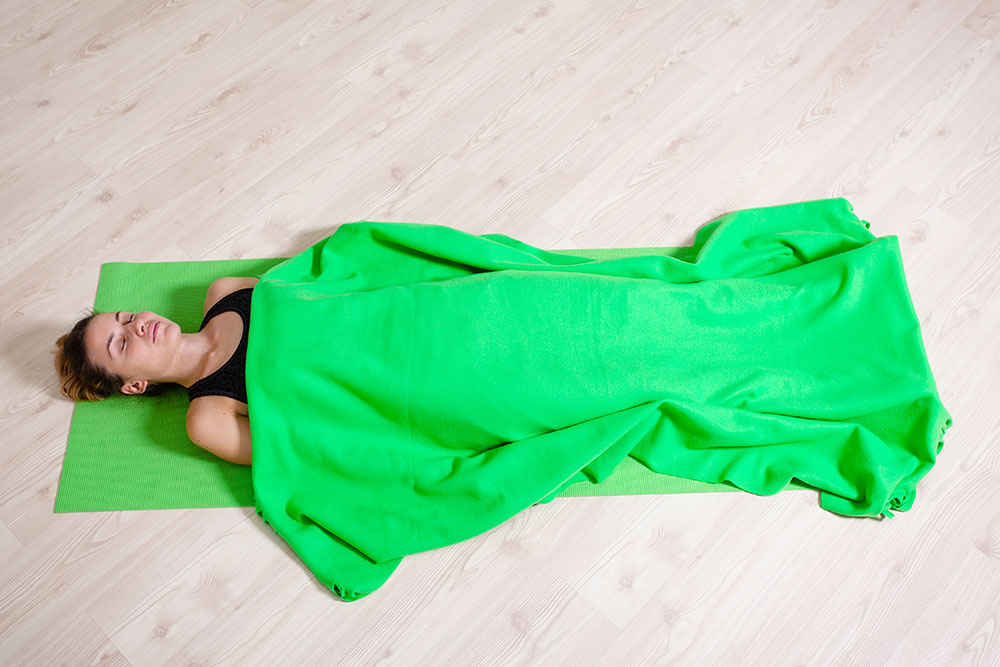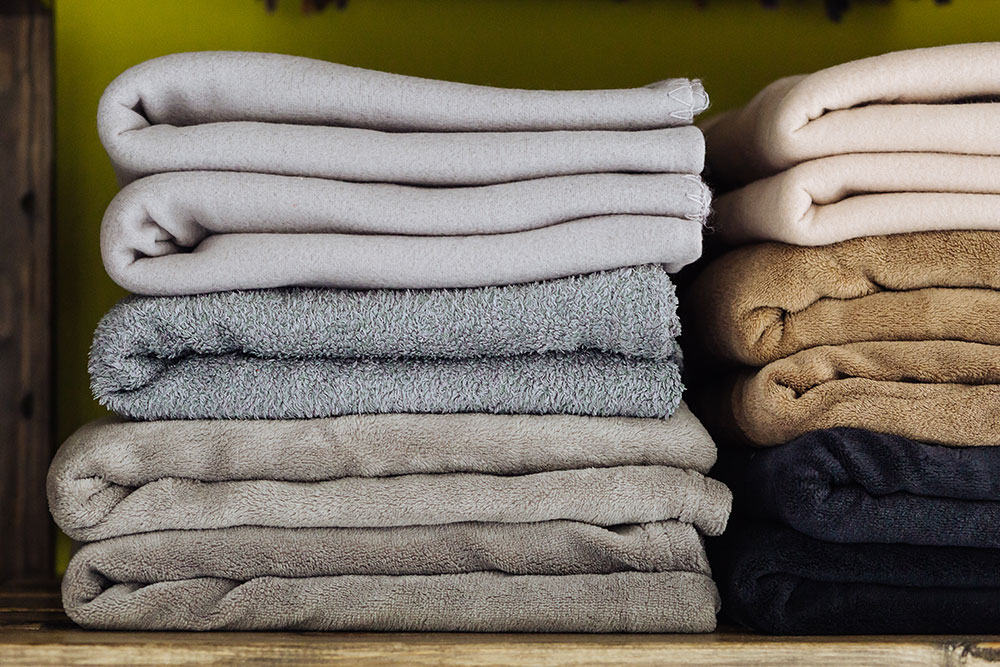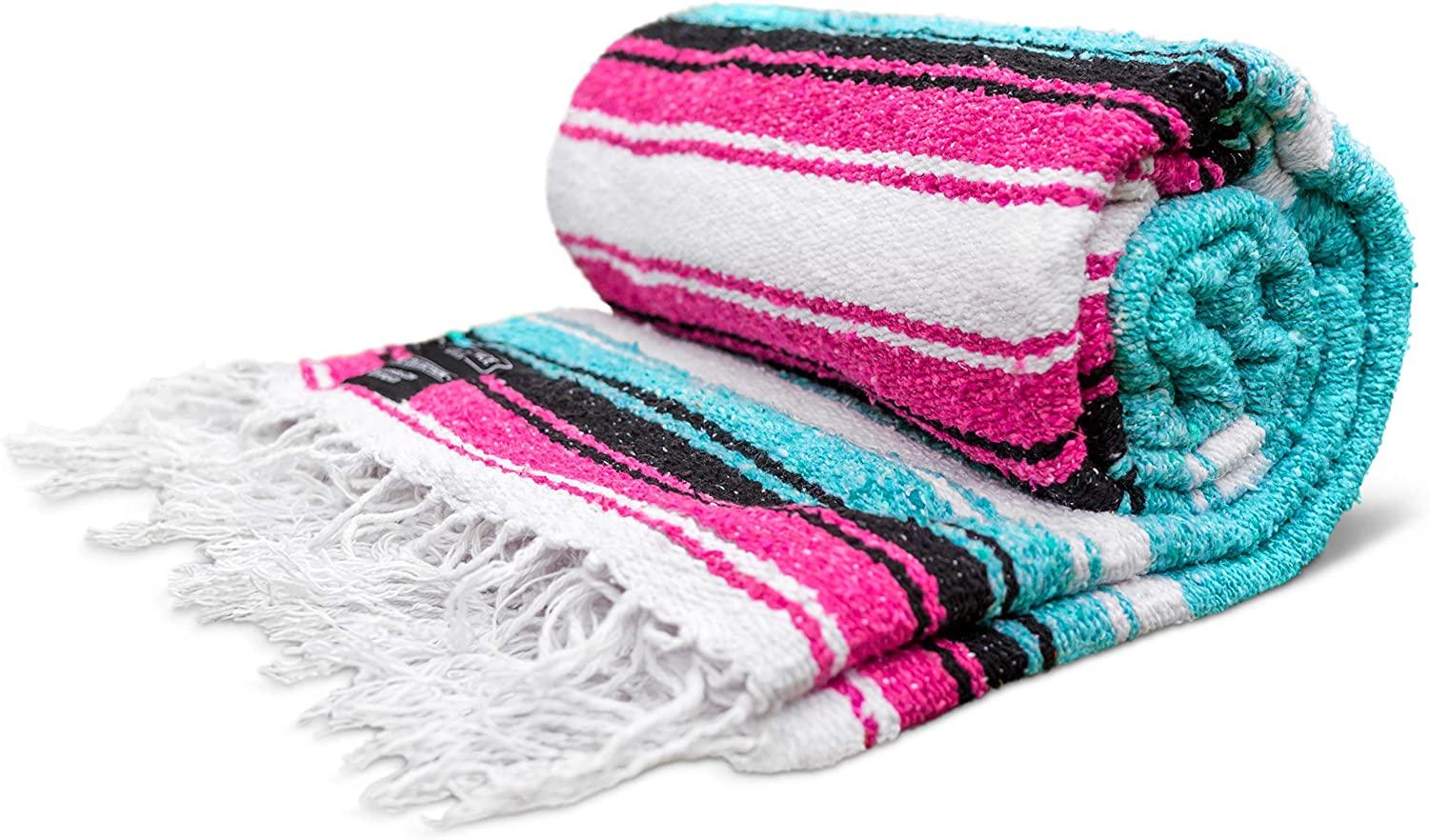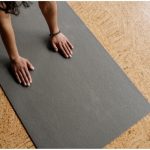I. Introduction

A. Importance of props in yoga practice
Props are essential tools in yoga practice as they provide support, help maintain proper alignment, and enhance comfort during asanas. They allow practitioners to deepen their practice, explore new poses, and adapt to their individual needs and limitations.
B. Introduction to yoga blankets and their benefits
Yoga blankets are versatile props that serve multiple purposes in yoga practice. They can be used for support, warmth, comfort, and modifications. Their softness, flexibility, and ability to conform to the body make them a valuable addition to any yoga routine.
C. Overview of the article’s content
In this blog post, we will dive into the uses and benefits of yoga blankets. We will explore how they can provide support and alignment in various asanas, offer warmth and comfort during relaxation and restorative poses, and act as props for modifications and accessibility. By understanding the versatility of yoga blankets, practitioners can optimize their practice and enhance their overall well-being.
II. Exploring the Uses of Yoga Blankets
A. Support and Alignment

Using blankets for extra cushioning in seated poses Yoga blankets can provide additional padding and support in seated poses such as Sukhasana (Easy Pose) or Siddhasana (Perfect Pose). Placing a folded blanket under the sit bones helps elevate the pelvis, maintaining a neutral spine and reducing strain on the lower back.
How blankets can help maintain proper alignment in various asanas Yoga blankets can be rolled up and used to support different body parts to maintain proper alignment in asanas. For instance, placing a rolled-up blanket under the knees in Adho Mukha Svanasana (Downward-Facing Dog) can alleviate pressure on the wrists and shoulders, while a folded blanket under the head in Savasana (Corpse Pose) can support the cervical spine.
B. Warmth and Comfort
Utilizing blankets for warmth during relaxation and restorative poses Blankets offer warmth and insulation during relaxation and restorative poses, such as Balasana (Child’s Pose) or Viparita Karani (Legs-Up-the-Wall Pose). Covering the body with a blanket helps encourage relaxation by creating a cozy and nurturing environment.
Creating a cozy and comfortable environment for meditation or pranayama Yoga blankets can be used to create a comfortable sitting surface for meditation or pranayama (breathing exercises). Placing a folded blanket under the hips can help elevate the pelvis, allowing for a more upright and supported sitting position.
C. Prop for Modifications and Accessibility

How blankets can be used to modify poses for different levels of flexibility Yoga blankets can assist in modifying poses to accommodate different levels of flexibility. For example, using a folded blanket under the front heel in Virabhadrasana II (Warrior II) can provide stability and support for practitioners with limited range of motion in their hips.
Enhancing accessibility for practitioners with limited mobility or injuries Yoga blankets can make yoga more accessible for practitioners with limited mobility or injuries. They can be used as props for support during standing poses, providing stability and balance. Blankets can also be placed under the knees or lower back in supine poses, reducing strain on those areas and allowing for a more comfortable and accessible practice.
By utilizing yoga blankets for support, alignment, warmth, comfort, and modifications, practitioners can enhance their yoga practice and tailor it to their individual needs. Whether you are a beginner or an experienced yogi, incorporating yoga blankets into your routine can provide an added layer of comfort and support, elevating your overall experience and well-being.
III. Different Types and Materials of Yoga Blankets
A. Traditional Mexican blankets
Traditional Mexican blankets are woven by artisans in Mexico using a combination of cotton, acrylic, and polyester fibers. They have a distinctive geometric pattern and vibrant colors. These blankets are known for their durability and strength.
The benefits of traditional Mexican blankets in yoga practice are numerous. They provide extra cushioning and support, making them ideal for sitting and kneeling poses. The weight of the blanket can also help to ground and stabilize the body in balancing poses. Additionally, these blankets can be folded and rolled up to provide support for more challenging poses or to adjust the height and angle of certain asanas.
B. Cotton or fleece blankets

Cotton or fleece blankets are another popular choice among yogis. These blankets are soft, lightweight, and offer additional insulation during practice. They are often preferred for restorative and yin yoga practices, where staying warm and cozy is essential.
One of the advantages of cotton or fleece blankets is their softness. They provide a gentle and comfortable surface for relaxation poses and Savasana. The extra insulation they offer also keeps the body warm, preventing stiffness and discomfort during longer holds. These blankets are also easy to clean and maintain, making them a practical choice for regular use.
C. Eco-friendly and sustainable options
For those who prioritize sustainability and eco-friendliness, there are now yoga blankets available made from environmentally friendly materials such as organic cotton, recycled polyester, and bamboo. These materials are biodegradable, renewable, and have a lower environmental impact compared to traditional blanket materials.
Choosing eco-friendly and sustainable options for your yoga practice comes with multiple benefits. Firstly, it aligns with your values and promotes a greener, more conscious lifestyle. Secondly, these materials are often softer, hypoallergenic, and free from harmful chemicals, making them safe for both you and the environment. Lastly, supporting businesses that prioritize sustainability encourages and contributes to a more eco-conscious industry as a whole.
IV. Care and Maintenance of Yoga Blankets
A. Washing and cleaning guidelines
To keep your yoga blankets clean and fresh, proper washing and cleaning techniques are essential. Depending on the material, blankets can usually be machine or hand washed. It is crucial to consult the care instructions provided by the manufacturer to ensure you are following the correct washing guidelines.
For machine washing, use a gentle cycle and cold water to prevent any damage. Avoid using harsh detergents or bleach, as they can weaken the fibers and fade the colors. If hand washing, gently agitate the blanket in lukewarm water with a mild detergent. Rinse thoroughly and squeeze out excess water without wringing, as this can distort the shape. Repeat the rinsing process until the water runs clear.
B. Extending the lifespan of yoga blankets

To extend the lifespan of your yoga blankets, it is important to implement a few simple practices. Firstly, avoid exposing them to direct sunlight for prolonged periods, as this can cause fading and damage the fibers. Secondly, be mindful of sharp objects, such as jewelry or buckles, that can snag or tear the fabric. Lastly, fold and store your blankets in a clean, dry place when not in use to prevent moisture buildup and mildew.
By taking these precautions, you can ensure that your yoga blankets remain in good condition for years to come.
V. Personal Experiences and Testimonials
A. Sharing experiences of yoga practitioners using blankets during practice
To provide a more comprehensive understanding of the benefits of yoga blankets in practice, we have gathered personal experiences and testimonials from yoga practitioners who have regularly incorporated blankets into their routines.
B. Highlighting the positive impact of using yoga blankets in different situations
Through personal anecdotes and stories, we will showcase the versatility of yoga blankets and how they have positively impacted practitioners in various situations. For example, how using a blanket helped someone find comfort and stability in a challenging pose or how it provided much-needed support during pregnancy or injury recovery.
C. Inspiring stories of how yoga blankets have enhanced practitioners’ overall practice and well-being
Lastly, we will share inspiring stories of how yoga blankets have enhanced practitioners’ overall practice and well-being. These stories will illustrate how the use of blankets can create a sense of grounding, nurture self-care, and promote relaxation and mindfulness.
By exploring the different types and materials of yoga blankets, understanding how to care for and maintain them, and learning from personal experiences, we hope to inspire and guide you in incorporating yoga blankets into your practice. Whether you are a beginner or a seasoned practitioner, these versatile props can add a new level of comfort, support, and enjoyment to your yoga journey.


